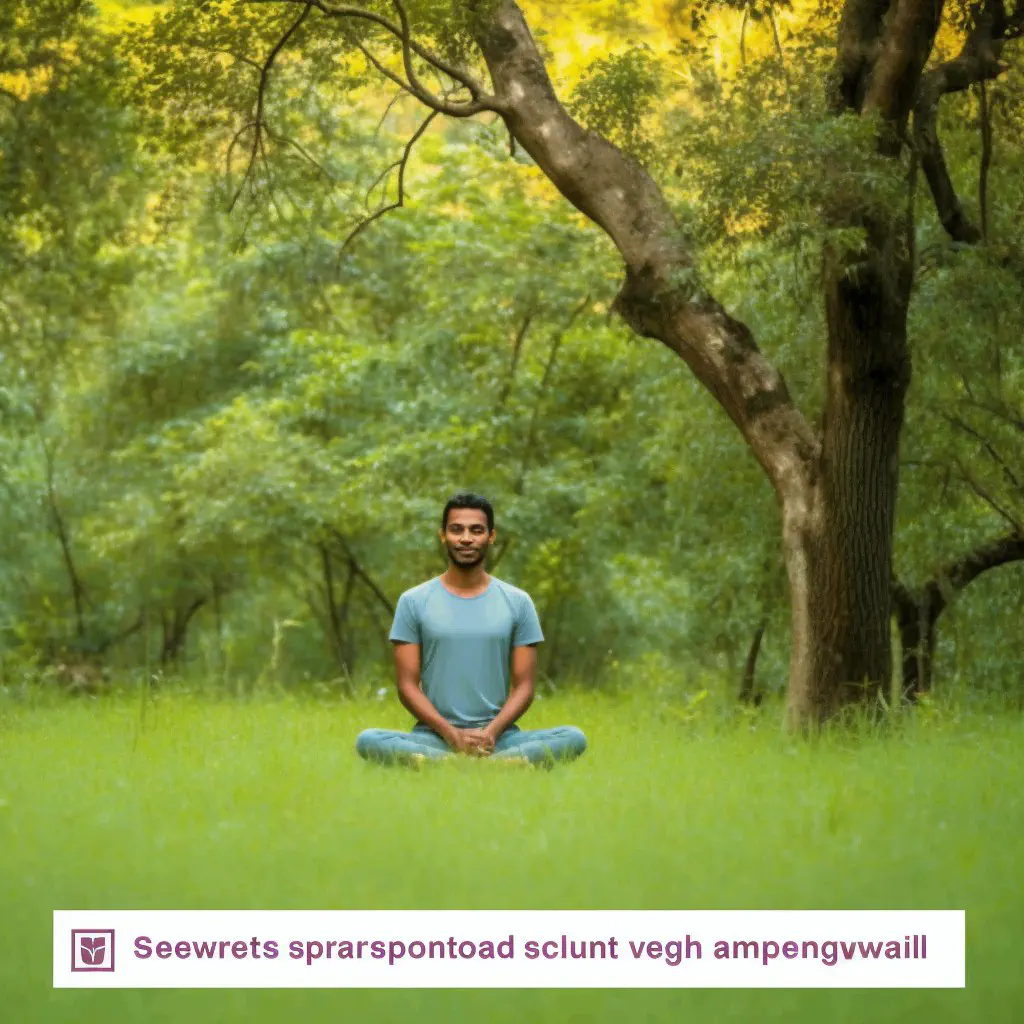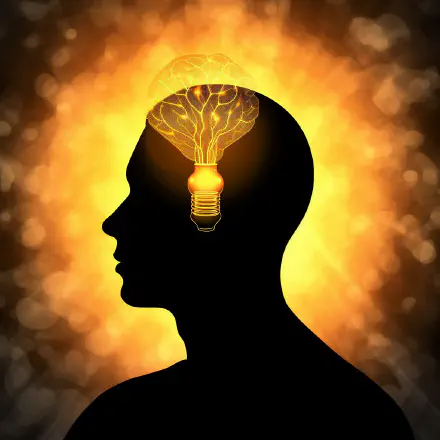
Introduction
Yoga has been gaining popularity worldwide thanks to its powerful benefits on overall well-being. From increased flexibility, strength, and balance to improved mental health, yoga has proven to be an effective practice for those seeking to manage their stress and emotions.
This guide aims to take you on a journey from anxiety to zen by exploring the powerful ways in which yoga can help you manage stress and emotions. In the following chapters, we will delve into the science behind stress and emotions, introduce you to the world of yoga, and guide you through specific yoga poses, breathing techniques, and meditations that can transform your emotional well-being.
Whether you are new to yoga or an experienced practitioner, this guide is for you. It is designed to help you incorporate the practice of yoga into your daily routine, creating a consistent and sustainable practice that will help you manage stress and emotions for a more peaceful, balanced life.
Chapter 1: Understanding Stress and Emotions
Stress and emotions are an inevitable part of life. While some stress can be helpful in motivating us to achieve our goals, chronic stress and negative emotions can take a toll on our overall well-being.
Definition of Stress and Emotions
Stress is a physiological response to a perceived threat or challenge. It triggers a release of hormones such as cortisol and adrenaline, which prepare the body for the fight-or-flight response. Meanwhile, emotions are subjective experiences that arise in response to external or internal stimuli. Examples of emotions include happiness, sadness, anger, and fear.
Common Causes and Effects of Stress and Emotions
There are various sources of stress and emotions, including work, family, relationships, finances, and health issues. When we experience stress and emotions, it can affect our physical, emotional, and mental health. Chronic stress can lead to conditions such as high blood pressure, headaches, digestive problems, depression, and anxiety. Negative emotions, when unaddressed, can also lead to mood disorders and other mental health problems.
How Stress and Emotions Affect Overall Well-being
Stress and negative emotions can have a significant impact on our overall well-being. When we experience chronic stress, it can affect various systems in our body, leading to physical and mental health problems. Negative emotions, when unaddressed, can also lead to mood disorders and other mental health problems. Therefore, it is crucial to learn how to manage stress and emotions effectively to maintain or improve our well-being.
Chapter 2: Introduction to Yoga
Yoga is an ancient practice that originated in India over 5,000 years ago. The word “yoga” comes from the Sanskrit word “yuj,” which means to unite or to join. Yoga is a practice that unites the mind, body, and spirit.
Types of Yoga and Their Benefits
There are many different types of yoga, each with its own set of benefits. Some of the most popular types of yoga include:
- Hatha yoga: focuses on physical postures and breathing exercises
- Vinyasa yoga: involves flowing movements synchronized with the breath
- Ashtanga yoga: a physically demanding type of yoga that involves a set series of postures
- Kundalini yoga: focuses on energy flow and spiritual awakening
- Restorative yoga: a gentle practice that uses props to support the body and promote relaxation
Yoga has many benefits for overall well-being, including:
- Improved flexibility, strength, and balance
- Reduced stress and anxiety
- Increased self-awareness and mindfulness
- Better sleep
- Improved mood and emotional regulation
Why Yoga Is Effective for Stress and Emotions Management
Yoga has been shown to be an effective tool for managing stress and emotions. Through the physical postures, breathing techniques, and meditation practices, yoga helps to calm the nervous system and promote relaxation. This can lead to reduced levels of stress and anxiety, as well as an improved ability to manage emotions. Additionally, yoga promotes mindfulness and self-awareness, which can help individuals become more in tune with their emotions and better equipped to respond to stress in a healthy way.
Chapter 3: Yoga Poses for Stress and Emotions Management
In this chapter, we will explore specific yoga poses that can help manage stress and emotions. It is essential to note that yoga is not a one-size-fits-all approach, and what works for one person may not work for another. It would be ideal for experimenting and finding the poses that work best for your body and needs.
Balasana (Child’s Pose)
One of the most calming and restorative poses in yoga is Balasana or Child’s Pose. This pose is perfect for relieving stress and anxiety, as it helps to calm the mind and deepen the breath. Simply start on your hands and knees, with your big toes touching and your knees spread wide apart. Sit your hips back towards your heels and reach your arms forward, resting your forehead on the mat or a block.
Viparita Karani (Legs Up the Wall Pose)
This pose provides a gentle inversion that helps reverse blood flow and calm the nervous system. It is an excellent pose to relieve anxiety, insomnia, and fatigue. To do this pose, sit with one hip next to a wall and swing your legs up the wall as you lie down on your back. If you have tight hamstrings, move your hips a bit further away from the wall.
Sukhasana (Easy Pose)
Sukhasana or Easy Pose is a basic meditation posture that can help you focus and calm your mind. Sit cross-legged on the floor or on a cushion, making sure your spine is straight. You can also sit on a blanket to elevate your hips slightly. Rest your hands on your knees, palms facing down or up, and breathe deeply in and out through your nose.
Uttanasana (Standing Forward Bend)
Uttanasana or Standing Forward Bend is a forward fold that can help reduce stress and anxiety by calming the mind. It also provides a gentle stretch to the hamstrings and lower back. To do this pose, stand at the top of your mat with your feet hip-width apart, fold forward from your hips, and let your head hang heavy. You can bend your knees if you have tight hamstrings.
Savasana (Corpse Pose)
Savasana or Corpse Pose is the final relaxation pose often used for deep relaxation and stress relief. It is a pose of deep surrender, where you release all tension and relax the body and mind. Lie on your back with your arms at your sides, palms facing up, and close your eyes. Focus on your breath and allow your body to relax completely.
Incorporating these yoga poses into your daily routine can help you manage stress and emotions effectively. Remember to listen to your body and modify the poses as needed to ensure your practice is safe and enjoyable.
Chapter 4: Breathing Techniques for Stress and Emotions Management
Breathing techniques, also known as pranayama, are a crucial aspect of yoga practice. Proper breathing can help calm the mind and reduce stress and anxiety. In this chapter, we will explore specific breathing techniques that can help manage stress and emotions.
Importance of Breathing in Yoga and Stress Management
Breathing is essential to life, but many people don’t realize that how we breathe can affect our physical and emotional health. Shallow or rapid breathing can cause feelings of anxiety and stress, while slow, deep breathing can help calm the mind and promote relaxation. In yoga, proper breathing is emphasized to help practitioners get the most out of each pose and to help manage stress and emotions.
Specific Breathing Techniques for Stress and Emotions Management
-
Deep Breathing: This is a simple yet effective breathing technique that can be practiced anywhere at any time. Sit comfortably with your back straight, inhale slowly and deeply through your nose, filling your lungs completely, and exhale slowly through your mouth. Repeat for several breaths, focusing on the sensation of the breath moving in and out of your body.
-
Nadi Shodhana: Also known as alternate nostril breathing, this technique helps balance the right and left hemispheres of the brain, promoting a sense of calm and balance. Sit in a comfortable position with your spine straight. Close your right nostril with your right thumb and inhale through your left nostril. Hold your breath for a moment, then close your left nostril with your ring finger and exhale through your right nostril. Reverse the process, inhaling through your right nostril and exhaling through your left. Repeat for several breaths.
-
Ujjayi Breathing: Also known as ocean breath, this technique involves breathing in and out through the nose while slightly constricting the back of the throat, creating an audible “hissing” sound. This technique can help calm the mind and relieve tension. Sit comfortably with your spine straight, breathe in deeply through your nose, then exhale while constricting the back of your throat. Continue for several breaths, focusing on the sound and sensation of the breath.
How to Properly Perform Each Breathing Technique
It’s important to practice breathing techniques correctly to get the desired benefits. Take your time and follow these steps for each technique:
-
Deep Breathing: Sit comfortably with your back straight, inhale slowly and deeply through your nose, filling your lungs completely, and exhale slowly through your mouth. Repeat for several breaths, focusing on the sensation of the breath moving in and out of your body.
-
Nadi Shodhana: Sit in a comfortable position with your spine straight. Close your right nostril with your right thumb and inhale through your left nostril. Hold your breath for a moment, then close your left nostril with your ring finger and exhale through your right nostril. Reverse the process, inhaling through your right nostril and exhaling through your left. Repeat for several breaths.
-
Ujjayi Breathing: Sit comfortably with your spine straight, breathe in deeply through your nose, then exhale while constricting the back of your throat. Continue for several breaths, focusing on the sound and sensation of the breath.
Tips for Incorporating Breathing Techniques into Daily Routine
Breathing techniques can be practiced anywhere, anytime, and can be an effective way to manage stress and emotions. Here are some tips for incorporating them into your daily routine:
-
Start small: Begin with just a few minutes of deep breathing or practicing one of the other techniques. Gradually increase the amount of time you spend practicing.
-
Make it a habit: Incorporate breathing techniques into your daily routine, such as doing them before bed or during your lunch break.
-
Focus on the breath: When practicing breathing techniques, focus on the sensation of the breath moving in and out of your body. This can help calm the mind and promote relaxation.
Incorporating breathing techniques into your yoga practice and daily routine can help relieve stress and manage emotions. Remember to practice regularly and take your time to reap the benefits.
Chapter 5: Meditation for Stress and Emotions Management
Meditation has been practiced for thousands of years and is known to help with stress and emotions management in various ways. It involves focusing your mind on a particular object, thought, or activity to achieve mental clarity and relaxation.
Introduction to Meditation and Its Benefits
Meditation has numerous benefits for the mind and body. It can help reduce stress and anxiety, improve mood, increase focus and concentration, and promote feelings of calmness and inner peace. Regular meditation practice can also lower blood pressure, improve immune system function, and boost overall well-being.
How Meditation Can Help with Stress and Emotions Management
Meditation can help individuals manage stress and emotions in several ways. When we practice meditation, it allows us to take a step back from our thoughts and feelings and observe them from a more objective point of view. This helps us develop a greater awareness of our emotions and triggers, leading to a better understanding of how to manage them effectively.
Also, meditation can help calm the nervous system by activating the parasympathetic response, leading to a relaxation response and reducing the stress response.
Specific Meditation Techniques for Stress and Emotions Management
Different meditation techniques can be practiced to help manage stress and emotions. Some effective techniques include:
- Mindfulness meditation, which focuses on being present and non-judgmental of thoughts and emotions.
- Loving-kindness meditation, which involves generating feelings of compassion and goodwill towards oneself and others.
- Progressive relaxation meditation, which involves systematically relaxing different muscle groups in the body.
When beginning a meditation practice, it is important to start with shorter sessions and gradually build up to longer periods. Consistency is key, and even a few minutes a day can have significant benefits over time.
Tips for Incorporating Meditation into Daily Routine
Incorporating a regular meditation practice into your daily routine can be challenging, but there are several tips to make it more manageable:
- Schedule meditation into your daily routine, ideally at the same time each day, to make it a habit.
- Find a quiet and comfortable space to meditate.
- Use guided meditations or apps to help guide your practice.
- Be patient with yourself, recognize that progress takes time, and don’t get discouraged if your mind wanders during your practice.
By regularly practicing meditation and using it as a tool for stress and emotions management, individuals can achieve greater emotional well-being and a better quality of life.
Chapter 6: Creating a Yoga and Meditation Routine
Consistency is key when it comes to yoga and meditation practice. It’s important to create a routine that fits your lifestyle and needs, and one that you can stick to. Here are some tips for creating your own yoga and meditation routine:
Determine Your Goals
Before you start practicing yoga and meditation, determine why you want to do it. Are you looking to manage stress and anxiety? Do you want to improve your flexibility and strength? Knowing your goals will help you tailor your routine to your specific needs.
Set a Regular Time
Set aside a regular time each day for your yoga and meditation practice. This will help you make it a habit and ensure that you have time for it in your schedule. Many people find that practicing in the morning helps them start their day off on the right foot.
Choose a Consistent Place
Choose a consistent place in your home where you can practice yoga and meditation. This could be a spare room, a corner of your bedroom, or even your living room. Make sure the space is quiet, clean, and free of clutter.
Start Small
When starting a new routine, it’s important to start small. Begin with shorter sessions and work your way up to longer sessions as you become more comfortable with the practice.
Mix It Up
To keep things interesting and avoid getting bored, mix up your routine every once in a while. Try different styles of yoga, switch up your meditation techniques, or practice at different times of the day.
Stay Motivated
Staying motivated can be challenging, especially when you’re first starting out. One way to stay motivated is to track your progress. Keep a journal of your yoga and meditation practice and write down how you’re feeling before and after each session. This will help you see the benefits of your practice and motivate you to continue.
Remember, creating a yoga and meditation routine takes time and effort, but the benefits are well worth it. With consistency and dedication, you can transform your emotional well-being and manage stress and anxiety.
Conclusion
In conclusion, practicing yoga and meditation can be life-changing when it comes to managing stress and emotions. The combination of physical movement, breathwork, and mindfulness creates a holistic approach that is effective in calming the mind and body. With consistent practice, you will experience benefits such as improved mood, better quality of sleep, and increased resilience when faced with stressful situations.
It’s important to remember that creating a routine that works for you is essential for success. Experiment with different types of yoga, meditation, and breathing techniques until you find what resonates with you. Incorporating just a few minutes of practice into your daily routine can make a huge difference. Remember to be patient and compassionate with yourself as you embark on this journey.
As you continue to prioritize your emotional well-being through yoga and meditation, you will discover a sense of inner peace and clarity that extends to all aspects of your life. Make a commitment to yourself to start practicing today and experience the profound impact of these ancient practices. Namaste.


